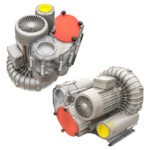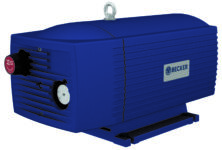Regenerative and centrifugal blowers may look similar on the shop floor but are designed for significantly different end uses. Let’s take a look at the merits of regenerative vs. centrifugal blowers and consider which one might be best for your application.
DIFFERENT STROKES: REGENERATIVE VS. CENTRIFUGAL BLOWERS
Regenerative and centrifugal blowers are both designed to supply or remove air quickly in industrial settings, but each offers distinct strengths and weaknesses that suit them for very different purposes. Here’s how these two popular blower designs work and how each can best serve your industrial air needs.
SPIN VS. SQUEEZE: HOW BLOWERS WORK
Both centrifugal and regenerative blowers are driven by rotating impellers or turbines powered by a motor. In each case, the impeller works to draw air through an inlet into an enclosed circular housing and concentrate it before releasing it as a more powerful linear flow.
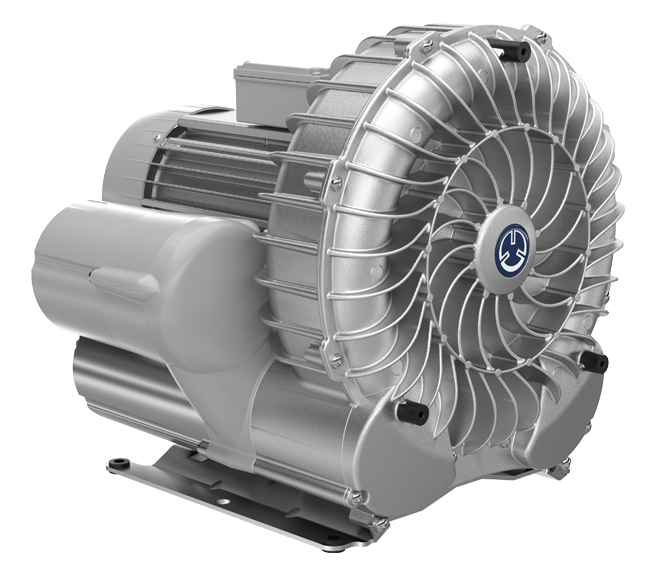
In centrifugal blowers, the air is drawn in through an inlet at the center of the impeller. Curved vanes on the impeller spin this air inside the housing, speeding it up as it is forced outward by centrifugal forces. The accelerated air on the periphery of the impeller is able to exit while relatively lower pressure created at the center works to suck even more air into the unit.
In regenerative blowers, the impeller is divided into a series of cells. As the impeller spins, air trapped by each cell is forced outward by centrifugal pressure but is then redirected by specially shaped vanes to the inside edge of the following cell. This sets up a powerful spiral airflow that increases pressure as it is squeezed into successive cells before exiting the unit.
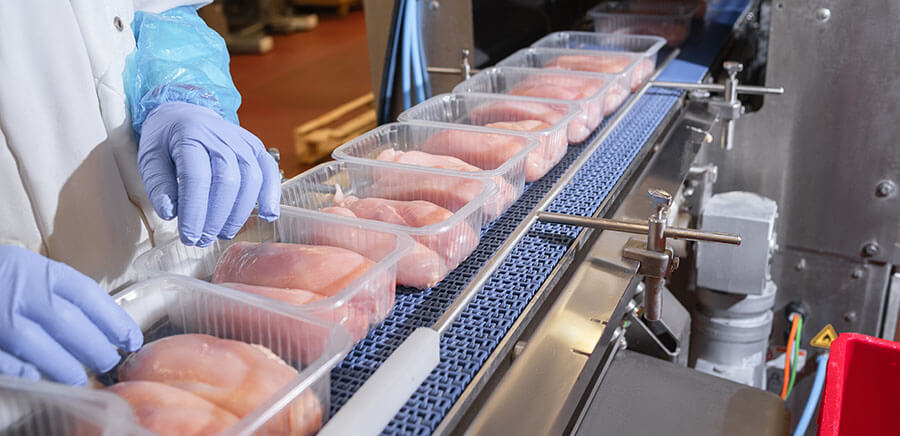
More complex two-stage regenerative blowers “supercharge” this turbine effect by directing air around the unit a second time through a parallel series of impeller cells.
ADVANTAGES OF CENTRIFUGAL BLOWERS
Centrifugal blowers are known as low-pressure/high-volume devices. While pressure remains relatively stable, these devices are capable of moving large amounts of air quickly. They are used where large volumes of air are needed at lower pressures and are built in a range of sizes with capacities ranging from hundreds to hundreds of thousands of cubic feet per minute (cfm).
To increase pressure, centrifugal blowers need to be run faster or are mounted in a multi-stage series of blowers powered by a single motor, but these solutions tend to be relatively inefficient and expensive to power.
Centrifugal blowers are typically used in:
- Ventilation and heating
- Filtering and dust removal
- Pneumatic transfer
- Incinerators and industrial furnaces
Centrifugal blowers are relatively simple machines and can provide a cost-effective solution for many high-volume applications. However, the need to drive high rotation speeds means motors often operate at near capacity, while dedicated bearings, belts, or gearing equipment is needed to transfer power to units not equipped with a directly mounted motor.
As a result, centrifugal equipment tends to be:
- Noisier
- More expensive to maintain
- Often has a shorter operating life
ADVANTAGES OF REGENERATIVE BLOWERS
Regenerative blowers are known as high-pressure/low-volume devices. While regenerative devices don’t move as much air volume as centrifugal equipment, they’re able to increase air pressure significantly. This means they can be used for a wide variety of both pressure and vacuum applications.
Regenerative blowers also rely on a “no touch,” almost frictionless mounting that allows the impeller to spin faster than the motor driven by its own internal pressure differential.
These blower motors are usually directly mounted, so no additional transfer equipment is needed.
As a result, regenerative blowers:
- Are quieter
- Can operate at a variety of speeds
- Are relatively energy efficient
- Require less maintenance
- Have a longer operating life
Versatile, efficient, and able to provide both high-pressure air and effective suction, regenerative blowers have become critical in a wide range of industrial processes.

These include:
- Suction mounting for CNC machining
- Vacuum packaging
- Slug removal on punch equipment
- Chip removal during engraving
- Industrial drying
- Medical and surgical devices
The need for precision manufacturing and lighter materials means regenerative blower equipment is relatively expensive but also comes with more customization options or accessories than comparable stand-alone centrifugal equipment.
WHICH BLOWER IS RIGHT FOR YOU?
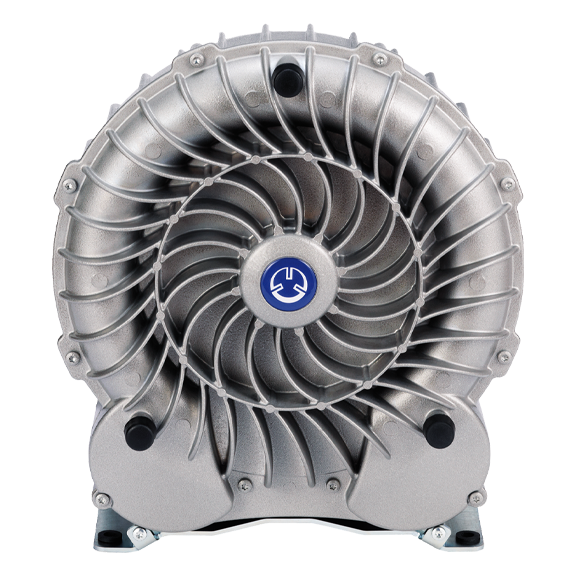
Choosing the best blower equipment for your business depends on your specific application.
If you require large volumes of air at near atmospheric pressure then simple centrifugal equipment may do the trick.
If however, you’re involved in manufacturing or processing that requires precise application of high pressure or suction, then it’s likely that your needs will be met by regeneration technology.
Increasingly efficient regeneration equipment is also taking over many functions which were once considered the sole domain of traditional centrifugal blowers.
HOW BECKER BLOWERS ARE BETTER
Our blowers have many unique features that set them apart from the others.
PATENTED FILTERS WITH CLEAR HOUSING
Our regenerative blowers are fitted with a patented built-in inlet filter that has a clear housing. This allows you to visually inspect the filter and determine if it’s dirty.
Since clogged filters lead to overheating and damage to the machine, being able to check the cleanliness of the filter easily can extend the life of the blower.
What’s more, the housing is integrated so it doesn’t need to be externally added on, which would increase the cost, require additional plumbing, and expand the unit’s dimensions.
Lastly, our filters are included in the price of the blower. Other companies charge separately for filters, which also have to be installed—incurring more expense for the customer.
AN IMPECCABLE IMPELLER
Our impeller is optimally designed with oblique blades and a closed face. This makes our motor better at scooping air, which reduces the amount of energy it needs to operate. The design also allows for a cooler exhaust temperature with higher flow or vacuum/pressure.

Because Becker blowers use a closed face impeller, we don’t need to add another one to provide a double-stage blower. However, other manufacturers use open face impellers with blades that are bent only slightly to grab the air. Therefore they have to use two impellers to provide a 2-stage blower.
BECKER KNOWS REGENERATIVE BLOWERS
Becker Pumps is a leading supplier of regenerative blowers and vacuum equipment to a wide range of industries. Whatever your pressure or suction needs, Becker has a high-efficiency pump capable of meeting them.
Becker’s SV range of single and double-stage regenerative blowers are available in capacities from 50 to 735 cfm and feature:
- Compact designs
- Highly efficient IE3 motors in 11 different power ratings
- Inlet and discharge silencers
- Versatile rubber foot or pedestal mounts
All of our regenerative units also feature non-contact compression, sealed bearings, and double filter equipment that allow significantly longer maintenance intervals.
Click below to find out which Becker regenerative blower is right for you.

